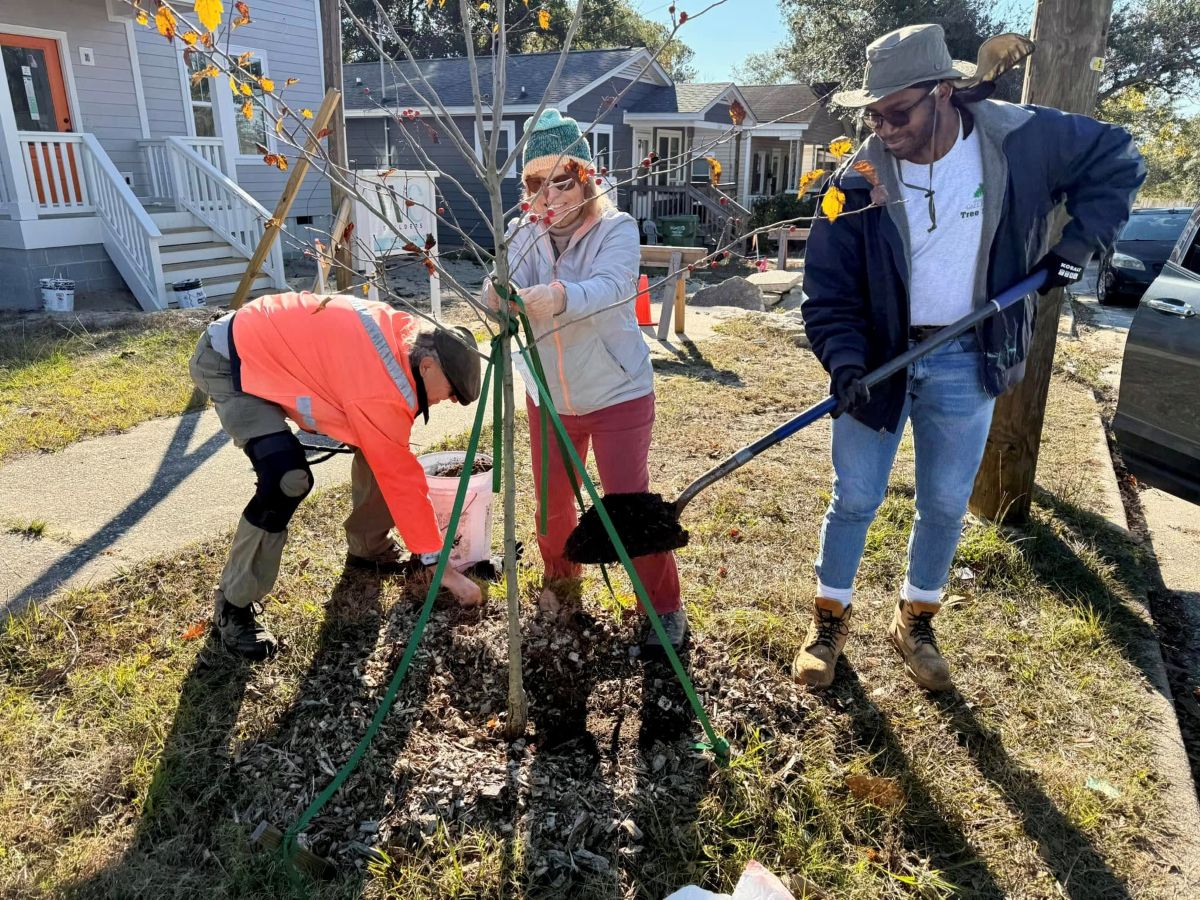
There will be online and in-person ways to join paleontologists at the North Carolina Museum of Natural Sciences in researching the Dueling Dinosaurs — the fossilized remains of a Tyrannosaurus rex and Triceratops horridus seemingly locked in battle when they were quickly buried together in one swift move 67 million years ago — that has never been studied.
The nonprofit organization Friends of the North Carolina Museum of Natural Sciences announced Tuesday the gift to the museum in downtown Raleigh.
Supporter Spotlight
“It is an immeasurable honor to welcome these specimens as they take up permanent residence here at the museum,” said Jason Barron, chair of the Friends of the museum, in a statement. “Dueling Dinosaurs is a singular find; we are incredibly grateful to our supporters for making this a reality and allowing our visitors – in-person and virtual alike – to experience this journey with us.”
Plans are underway to expand the museum to house what is thought to be the best-preserved skeletons of Triceratops and T. rex unearthed to date, according to museum officials, including the only 100% complete skeleton of T. rex discovered and preserved in a potential predator-prey encounter.
A unique aspect of these dinosaur remains is that the carcasses have not been studied and are entombed within sediment from the Montana hillside where they were discovered. The way these dinosaurs were entombed allows for scientists to study each bone in its natural position, body outlines, skin impressions and other soft tissues, as well as injuries and potential evidence of interaction, such as tyrannosaur teeth embedded in the Triceratops body. Scientists also will have access to biological data that is typically lost in the excavation and preparation processes.
“Becoming the home of the Dueling Dinosaurs is further evidence that the North Carolina Museum of Natural Sciences is one of the finest museums in the world,” said Susi Hamilton, secretary of the N.C. Department of Natural and Cultural Resources. “We look forward to inviting dinosaur lovers of all ages to experience this awe-inspiring fossil and learn from our talented team of paleontologists as they undertake a one-of-a-kind research project to uncover and analyze them.”
The renovation on the ground floor of the Nature Research Center will include high-tech exhibit spaces, an area where visitors can explore the tools and techniques used by paleontologists, and the science laboratory called “SECU DinoLab,” where scientists will research the specimens in front of the public.
Supporter Spotlight
Guests will be able to speak directly to the paleontology team in the SECU DinoLab that also will feature video feeds and research updates so the public, both onsite and online, can follow along live as paleontologists work to reveal and share their discoveries.
“We have not yet studied this specimen; it is a scientific frontier. The preservation is phenomenal, and we plan to use every technological innovation available to reveal new information on the biology of T. rex and Triceratops. This fossil will forever change our view of the world’s two favorite dinosaurs,” said Lindsay Zanno, head of paleontology at the museum and associate research professor at North Carolina State University. “The way we have designed the entire experience — inviting the public to follow the scientific discoveries in real time and participate in the research — will set a new standard for museums.”
In conjunction with the fossil acquisition, the design for the newest museum expansion project for the Dueling Dinosaurs exhibit is nearly complete. Construction is expected to begin in 2021.
“The museum is thrilled to have the unique opportunity to house and research one of the most important paleontological discoveries of our time,” said Eric Dorfman, director and CEO of the museum. “Not only are we able to uncover unknown details of these animals’ anatomy and behavior, but our new dedicated facility and educational programs will allow us to engage with audiences locally, across North Carolina, and worldwide.”
The research team created a new public science project, Cretaceous Creatures, to provide school children a way to make their own scientific discoveries. As part of the program, students will sort through Cretaceous sediment, discover and identify fossils from the Dueling Dinosaurs ecosystem, and send the data to paleontologists to be included in ongoing research. The program was made possible by a donation from the Bank of America Charitable Foundation to the Friends of the North Carolina Museum of Natural Sciences.
“The Dueling Dinosaurs project features history that has been in the making for millions of years, and we are thrilled to be part of bringing it to the public here in North Carolina! SECU Foundation is very proud to support the Friends of the North Carolina Museum of Natural Sciences in its exciting mission to showcase the scientific research required to uncover the preserved remains of two of the world’s most famous dinosaur species. This is happening through the new exhibit and science laboratory — the SECU DinoLab,” said Jo Anne Sanford, SECU Foundation board chair.
The fossils were acquired by the museum’s Friends group, solely via private funds, and will be gifted to the Museum’s Vertebrate Paleontology Collection. The acquisition also was made possible by the SECU Foundation, an anonymous donor, Bank of America Charitable Foundation, Duke Energy Foundation, North Carolina GlaxoSmithKline Foundation, Wake County and city of Raleigh, The Jandy Ammons Foundation, Delta Dental of North Carolina, Maynard Family Foundation, the PNC Foundation, Wells Fargo Foundation, the Re Corr Family Foundation and others.
To stay up to date about the latest unveiling discoveries, visit DuelingDinosaurs.org and Facebook @naturalsciences, Twitter @naturalsciences, and Instagram @naturalsciences.







